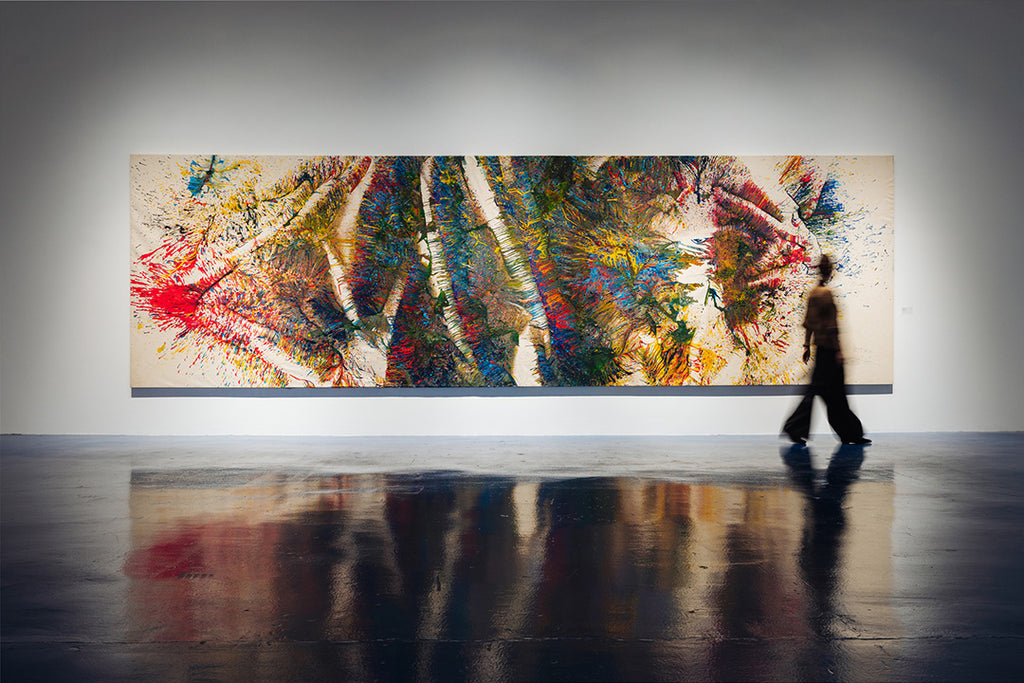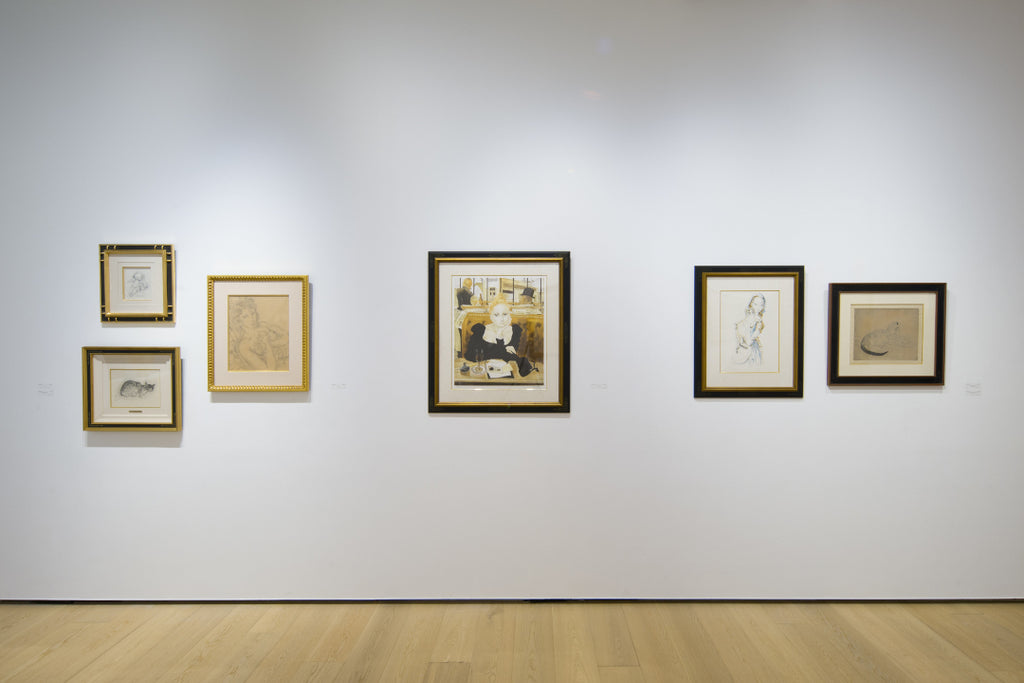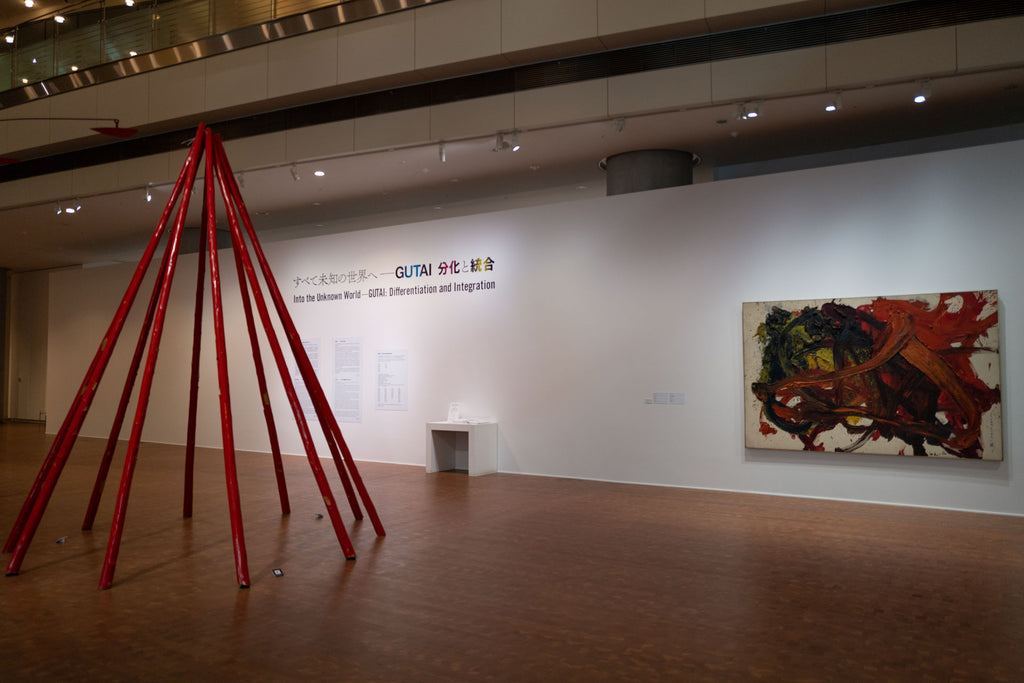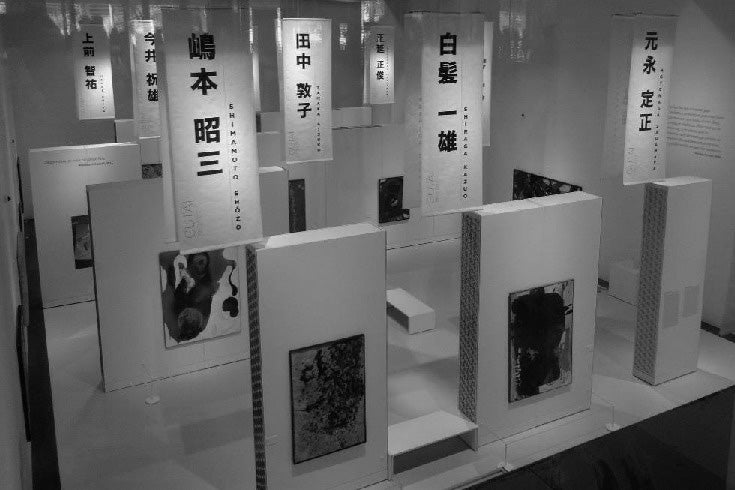ARTICLES
Michio Yoshihara: The Man Most Familiar with Gutai Leader Jiro Yoshihara
GUTAI STILL ALIVE 2015 vol.1
19/35

A project evolving the digitized archive of the book, “GUTAI STILL ALIVE 2015 vol.1”. The 19th edition focuses on the artist Michio Yoshihara, the son of Gutai Art Association leader Jiro Yoshihara. It looks back on how Michio's creative style has changed since joining Gutai as a young student, as well as his relationship with his father.
Michio Yoshihara: an Artist for Whom Material and Method Were More Important Than the Act of Painting
Koichi Kawasaki
Professor at the Department of Creative Media Studies, Faculty of Letters, Konan Women’s University
Michio Yoshihara (1933-1996) was raised in the family of a well-known painter – Jiro Yoshihara. In his infancy he played in his father’s atelier, started drawing as a small boy, and won prizes at painting competitions after he entered school. It could be said that none other than such an environment developed Michio’s talent. He entered Kwansei Gakuin University, alma mater for his father also, and joined the Gengetsukai painting club. During the third year at college he exhibited at the first Gembi exhibition, where artists in various fields from the Kansai region exhibited together, making the forefront of postwar art in the region. This might be the result of influence or advice from his father, Jiro. As the Gutai group was formed in 1954, Michio took part in it, although he was still in the fourth year at college. Michio was a son of Jiro, but the father was looking for artists who worked with free ideas, regardless of age. Artist Norio Imai joined Gutai at age 17, in another example.
Now let’s look back at the works of Michio as a member of Gutai. The first exhibition after the start of Gutai was the 7th Yomiuri Independent in March 1955. Works by Gutai members were all titled “Gutai,” and three of them were by Michio. One of them (now in the collection of Ashiya City Museum of Art and History) was sheets of newspaper glued together and mounted on a wood frame of approximately size No. 150, to which oil paint was applied with something like a spatula. Supports made of newspaper are also seen in some works by Shozo Shimamoto since around 1952. It is supposed that Shimamoto taught the method to Michio. For “Open-Air Experimental Modern Art Exhibition Challenging the Midsummer Sun,” held in the summer of 1955, Michio made a work from junk or scrap. In the first Gutai exhibition in the fall of the same year, he exhibited oil paintings in Informalist style. But it was after these exhibitions that Michio began to create his original works, stimulated by other Gutai artists. In 1956, in the second edition of the open-air exhibition he showed a work comprising electric bulbs and water tanks buried in the ground; in the Gutai exhibition he exhibited paintings for the viewer to roll out and pictures on cellophane paper to be projected on the wall. In this period Michio got interested in light and earth, and made works mainly with these as material. Until around 1960 he exhibited paintings done with coal tar mixed with sand and pebbles. They looked like the ground hanging on the wall, and eventually became works to represent Michio. The unpaved streets in the city of Ashiya, where Michio lived at that time, were rapidly being paved with asphalt in those days. It could be said that these works reflected the era. As to works for the stage, in “Sound Performance,” performers dressed anonymously in white made various noises on the stage. “All Right, the Moon Won’t Fall,” a stage exhibition in 1962 of which title was taken from rock-’n’-roll that he adored, featured 10 performers on the stage who only moved their fingers and mouths delicately. In his private life, Michio formed a modern jazz band with friends and played the drums and guitar – typically in the 1960s style. During the latter half of the Gutai era, he produced works with paper tape filling the surface, and paintings that derived from that.
Upon graduating from college, Michio joined the oilmanufacturing company of his father and worked in the advertising design department. In the office, sitting next to him was Toshio Yoshida, another Gutai artist. Together they designed packages and advertisements for the company products. Michio strived to devise new ideas for both the company job and art, and was always under the influence of his father, Jiro, in both the company and the Gutai group. The invisible mind of Jiro, the Gutai leader, and his sharp, critical eye toward the extravagant works of Gutai artists were best understood by Michio. Above all, many works that were brought into the atelier in the early days of Gutai surprised Michio and brought him deep into Gutai activities.
However, after the disbandment of Gutai in 1972, Michio kept exhibiting only at the annual Ashiya city exhibition until 1986. In the ’80s and afterward he mainly remade his own works for Gutai retrospectives. In 1987, at age 53, he retired early from his father’s company, with a desire to create artwork again. In 1991 and 1994 he produced computer-aided acrylic paintings. Those years saw a trend to retrospect Gutai seriously. But, as to early works using asphalt, only three of them had survived and been acquired by the Hyogo Prefectural Museum of Art and the Museum of Contemporary Art Tokyo, possibly to Michio’s chagrin. Michio passed away suddenly in 1996, but research afterward discovered several works from the late ’60s, which later joined the collection of the Ashiya City Museum of Art and History. One of the reasons why Michio has not been evaluated deservedly until today is the scarcity of his works surviving since the Gutai era. He wasn’t a prolific artist anyway but, judging from the works he left, it’s certain that he was an artist for whom material and method were more important than the act of painting.
(Mothly Gallery, June 2014)
Read more about the “Gutai Art Association »
*Information in this article is at the time of publication.



